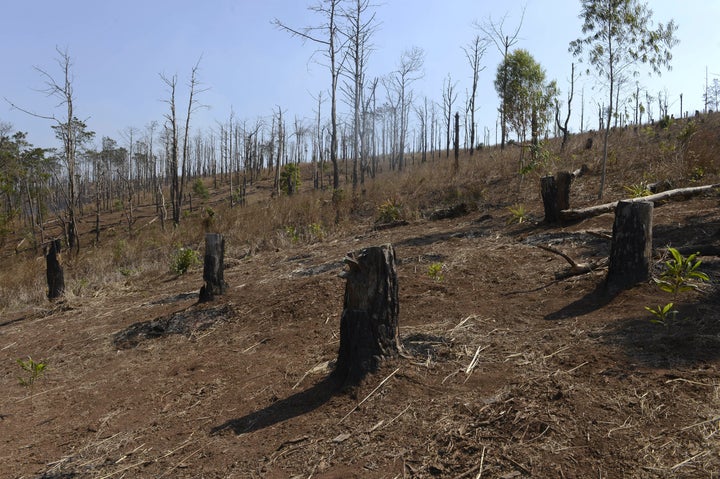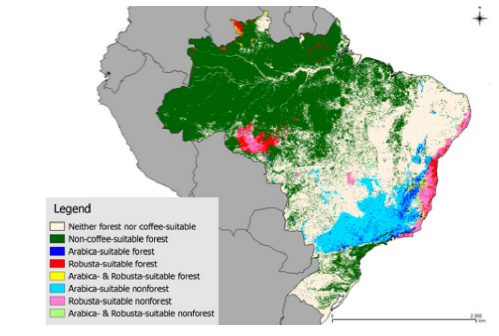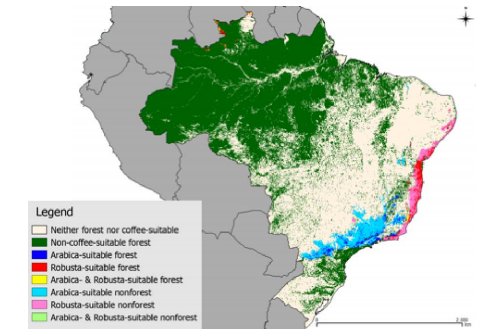
Coffee producers may need a wake-up call.
Soaring demand for the caffeinated brew could hasten destructive climate change by encouraging producers to chop down some of the last remaining tropical forests as they struggle to increase yields on existing farmland, according to a report released Thursday by the nonprofit Conservation International.
Coffee grows in tropical countries near the equator, such as Indonesia, Brazil and Uganda, where thick jungles rich with biodiversity provide fresh water and store tons of carbon. Farmers expand their fields by felling trees in these forests and burning the dense underbrush -- releasing that carbon into the atmosphere, where it traps other gases and warms the planet. As a result, deforestation is a twofold environmental catastrophe: Left intact, forests absorb many of the pollutants that cause global warming. Destroyed, they unleash even more emissions and speed up the pace of climate change.
Worse, it's a self-perpetuating cycle. As climate change worsens, the amount of existing farmland suitable for growing coffee shrinks.
The underlying market force in all this is the skyrocketing demand for coffee. Coffee growers may have to triple their production by 2050 to meet current demand forecasts, the report predicted. Coffee demand is expected to spike 25 percent in the next five years alone, according to a report last year by the industry group International Coffee Organization.
Consider the two maps below. The dark blue, red and yellow segments represent forested areas where certain types of coffee could be grown in Brazil in 2010.

Now fast forward to the middle of the century. By 2050, much of the farmland where Arabica beans are produced, represented in light blue, is expected to recede. Farmland for Robusta, represented in light pink, nearly disappears.

"Ideally, plant breeders will develop new varieties that are adapted to the harsher conditions of the future, while, simultaneously, improving productivity. That is a tall order, but not impossible," Tim Killeen, a lead author of the report, said in a statement. "If it doesn’t happen, then coffee production will shift to landscapes with conditions similar to today’s coffee growing areas.”
Tropical forests currently cover 60 percent of the land around the world that can be used for coffee production. By 2050, as much as
There is a hope. Some of the world's biggest coffee sellers, such as Nestlé and Starbucks, have begun improving their supply chains to increase farmers' yields with more sustainable growing practices. But unless those efforts are stepped up, the quickened pace of deforestation and climate change may derail the progress already made.
"Unless we act now, the trend of coffee production towards full sustainability may well be reversed," Peter Seligmann, founder and CEO of Conservation International, said in a statement. "The good news is that we know from our experience working with Starbucks and others that we can put the right practices in place to grow coffee in a way that protects forests and farmers -- but we need to keep pushing these techniques on a global scale."
